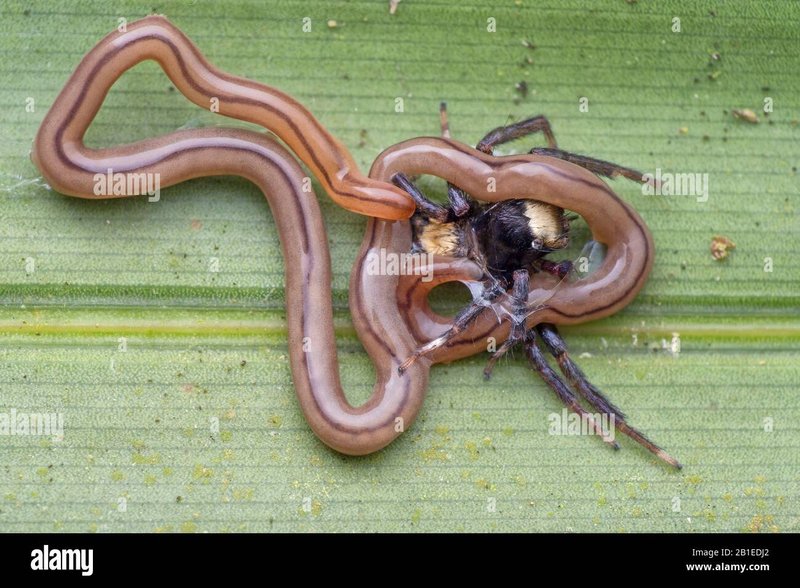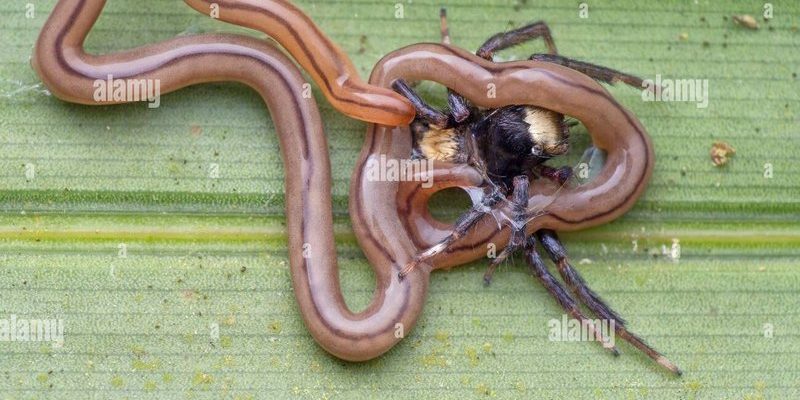
Ribbon worms are part of the phylum Nemertea, and they come in various sizes and colors, often resembling spaghetti or ribbons. They can be found in diverse environments, from sandy shores to deep-sea habitats. As we explore their dietary habits, think of ribbon worms as the hunters of the ocean, using their remarkable skills to capture food in ways that are both effective and fascinating.
Now, you might be wondering how these creatures find and eat their prey. Let’s break down their diets and the methods they use to sustain themselves.
The Basics of Ribbon Worm Diets
Most ribbon worms are **carnivorous**, meaning they primarily eat other animals. Their diet consists of small marine creatures like worms, crustaceans, and sometimes even fish. Depending on the species and their environment, the specific menu can vary quite a bit. Here’s a closer look at what they typically feast on:
- Worms: Many ribbon worms enjoy munching on other worms. They’re like the ultimate ocean predator, able to sneak up and capture their tasty wormy prey.
- Crustaceans: Small crabs and shrimp are also favorites. Ribbon worms have a knack for getting close enough to strike before these critters realize what’s happening.
- Small Fish: Larger species of ribbon worms can occasionally take down small fish, but this isn’t their main source of food.
Most ribbon worms use a special feeding organ, called a proboscis, to grab their meals. This long, slender appendage can shoot out quickly to entangle or pierce prey, making their hunting skills quite effective, to say the least.
How Ribbon Worms Hunt for Food
Imagine being in a stealthy underwater hunt, where you have to outsmart your food. Ribbon worms are natural-born hunters. They have incredible adaptations that help them snag meals with ease. Let’s break down their hunting strategies.
First off, their proboscis isn’t just for show. When a ribbon worm spots a potential meal, it can extend this organ quickly to capture prey. The proboscis may have sticky secretions that immobilize the victim, ensuring that the worm has time to reel it in. It’s kind of like having a high-tech fishing line—just way cooler!
Another tactic ribbon worms use is ambush. They often hide in the sand or among rocks, waiting for unsuspecting creatures to come too close. When the moment is right, they spring into action! It’s like playing a game of hide-and-seek in the ocean, where they’re the ones doing the seeking.
Diverse Diets Among Different Species
Not all ribbon worms are created equal, especially when it comes to what they eat. Various species have adapted to their environments and available food sources, leading to some diversity in their diets.
For instance, smaller ribbon worms might predominantly feast on microscopic organisms, while larger species may target bigger prey. This adaptability is crucial for survival. Here’s a closer look:
- Small Ribbon Worms: Generally focus on tiny marine creatures, including protozoans and small crustaceans. Their smaller size means they can slip into tight spots where bigger hunters can’t go.
- Large Ribbon Worms: Have a more extensive diet that includes fish and larger crustaceans. They’re essentially the “big fish” in their corner of the ocean.
This adaptability lets ribbon worms thrive in various habitats, ensuring they have enough to eat no matter where they live.
The Role of Ribbon Worms in the Ecosystem
Understanding what ribbon worms eat also tells us about their role in the ocean ecosystem. They might be small, but these creatures are essential for maintaining balance in their habitats.
As predators, ribbon worms help control the populations of their prey. Think of them as nature’s pest controllers. By keeping the numbers of smaller animals in check, they contribute to a healthier marine environment.
Moreover, when ribbon worms die, they become a food source for other marine life. It’s like a cycle; their existence supports various creatures, creating a web of life in the ocean.
Comparing Ribbon Worms with Other Marine Predators
So, how do ribbon worms stack up against other marine predators? That’s a curious thought! When you compare them to creatures like fish or octopuses, you’ll notice some big differences.
- Fish: Most fish actively hunt and chase their prey. In contrast, ribbon worms often rely on their stealth and ambush techniques. They’re the patient hunters of the underwater world.
- Octopuses: Octopuses are also clever hunters but typically use their intelligence and agility to capture food. Ribbon worms, on the other hand, have their unique methods that work perfectly for them.
By observing these differences, you can appreciate the variety of strategies animals use to survive in the wild. Each creature plays a specific role based on its adaptations and environment.
The Importance of Studying Ribbon Worm Diets
You might wonder why it matters to study the diets of ribbon worms. Well, the truth is, understanding their feeding habits can provide us with insights into broader marine ecosystems.
For scientists, studying these creatures helps them monitor the health of ocean environments. If ribbon worm populations change, it can indicate shifts in the ecosystem—like shifts in water quality or the availability of food sources.
Plus, these insights can help improve conservation efforts. By understanding the diets and habits of marine creatures, we can better protect their habitats and maintain the delicate balance of marine life.
Ribbon worms are a fascinating part of ocean life, showcasing unique diets and hunting strategies. From their carnivorous preferences to their clever feeding techniques, these creatures remind us of the complexity of marine ecosystems.
When we take the time to understand what ribbon worms eat, we also gain a more profound appreciation for the interconnectedness of life in our oceans. So, the next time you think about marine animals, don’t forget the ribbon worm—nature’s stealthy predator, playing an essential role in maintaining the balance of underwater habitats.

